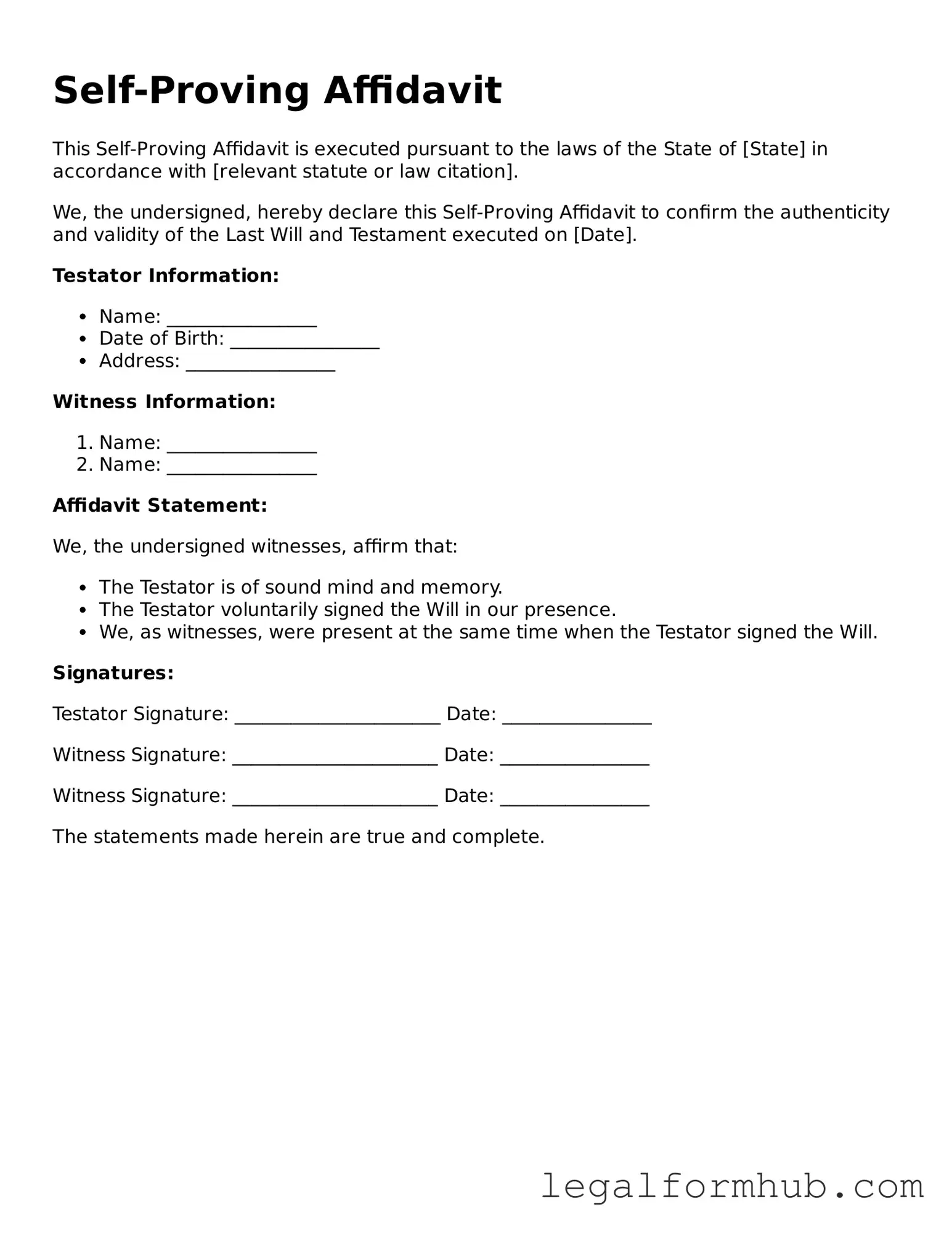Printable Self-Proving Affidavit Document
A Self-Proving Affidavit is a legal document that helps to simplify the probate process by confirming the validity of a will. This form allows the testator and witnesses to affirm, under oath, that the will was signed voluntarily and in accordance with the law. By including this affidavit, families can avoid the need for witnesses to appear in court, making the process smoother during a difficult time.
Open Self-Proving Affidavit Editor Here
